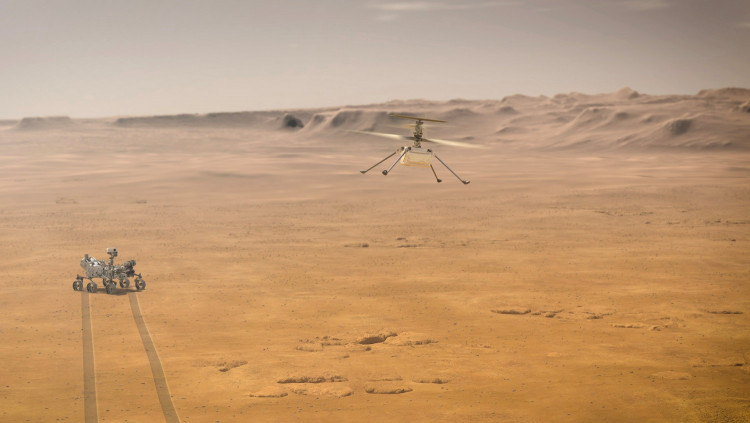Perseverance carries with it laser retroreflectors so that in the future, the devices could deliver new science and safer Mars landings.
Astronauts took with them instruments called retroreflectors when the Apollo landed on the Moon, which are actually small clusters of mirrors. The idea was for physicists on Earth to hit them with lasers to determine how long it took for the beams to return. This provided remarkably detailed orbit and shape measurements of the Moon, including how it varied significantly depending on the gravitational force of the Earth.
Work continues to this day on these Apollo-era lunar retroreflectors, and scientists intend to do related tests on Mars. NASA's Perseverance rover carries the palm-size Laser Retroreflector Array (LaRA) expected to land on the Red Planet on Feb. 18, 2021.
There's also a small one called Laser Retroreflector for InSight (LaRRI) onboard the agency's InSight lander. And onboard the ESA ExoMars rover, which will launch in 2022, there will be a retroreflector.
Although there is currently no laser in the works for this form of research on Mars, the devices are targeted for the future: reflectors such as these may one day allow scientists undertaking what is called laser-ranging research to calculate the location of a rover on the Martian surface, test the general relativity principle of Einstein, and help make possible landings on the Red Planet more accurate.
The devices act a lot like a reflector of a bike, reflecting light back in its source direction. For instance, Perseverance's LaRA is a 2-inch-wide (5-centimeter-wide) dome speckled with glass cells containing half-inch holes. Three mirrored faces are mounted in each cell at 90-degree angles from each other such that light is focused back out in precisely the same direction it comes from when entering the holes.
Despite Mars being some 249 million miles away at its farthest point from Earth, the beams that Perseverance's LaRA and InSight's LaRRI were designed to represent will probably have a much shorter path. The laser beams will only need to fly back and forth from a possible Mars orbiter fitted with a fitting laser, rather than moving back and forth from Earth, which would need massive retroreflectors.
Landings on Mars are difficult. The project will focus on Terrain-Relative Navigation, a new technology that compares photographs taken during descent to an onboard chart, to help bring Perseverance safely to the surface. If the spacecraft finds itself approaching trouble too strongly, it will step backward.
But in such a mission-critical case, you will never have too many backups. The sequence of reference points from laser retroreflectors may be used by potential missions barreling into the Red Planet's surface as a check on the efficiency of their Terrain Relative Navigation systems and may even improve their accuracy down to a few centimeters.
When it is possible to determine in mere feet, the difference between successfully landing near an attractive geological formation or sliding down the steep slope of a crater rim, retroreflectors might be crucial.






